The seventeen UN Sustainable Development Goals are the global blueprint to achieving a better and more sustainable future for all. They address the global challenges we face, including poverty, inequality, climate change, environmental degradation, peace and justice with a series of specific targets within each Goal. Below are some examples of how we are contributing.
 End poverty in all its forms everywhere: this includes resilience to disasters, which we support through solar-powered desalination and decontamination; Nanopatch for ambient-temperature vaccination programs; vaccine and drug development to tackle emerging and tropical diseases, including those spreading as a result of climate change (dengue fever, malaria); new drugs and bacteriophage to fight the rapidly growing problem of antibiotic resistance; portable X-ray machines and wound glue for disaster response; and safe, portable batteries for emergency power.
End poverty in all its forms everywhere: this includes resilience to disasters, which we support through solar-powered desalination and decontamination; Nanopatch for ambient-temperature vaccination programs; vaccine and drug development to tackle emerging and tropical diseases, including those spreading as a result of climate change (dengue fever, malaria); new drugs and bacteriophage to fight the rapidly growing problem of antibiotic resistance; portable X-ray machines and wound glue for disaster response; and safe, portable batteries for emergency power.
 End hunger, achieve food security and improved nutrition and promote sustainable agriculture: We support research into more efficient agriculture through increased drought tolerance of crops, combatting pests, better fertilisers and improved soils. A new ‘green ammonia’ technique massively reduces the energy needed to produce ammonia, which, as a fertiliser, is currently responsible for feeding half the world’s population. It can be produced instantly on site, rather than being stored, as it was in Beirut, increasing safety.
End hunger, achieve food security and improved nutrition and promote sustainable agriculture: We support research into more efficient agriculture through increased drought tolerance of crops, combatting pests, better fertilisers and improved soils. A new ‘green ammonia’ technique massively reduces the energy needed to produce ammonia, which, as a fertiliser, is currently responsible for feeding half the world’s population. It can be produced instantly on site, rather than being stored, as it was in Beirut, increasing safety.
 Ensure healthy lives and promote well-being for all at all ages: Many research groups use our microscopy for studying important infectious diseases such as malaria to develop treatments and vaccines. The Nanopatch will revolutionise global vaccination programs and new rapid vaccine development platforms rely on our microscopy. Solar-powered water filtration is designed to combat waterborne diseases and innovative polymers decontaminate dangerous environments, removing heavy metals and PFAS. Antibiotic resistance is a potential global disaster and new drugs and bacteriophage are being developed to tackle this. Chronic disease and cancer are also the focus of much research.
Ensure healthy lives and promote well-being for all at all ages: Many research groups use our microscopy for studying important infectious diseases such as malaria to develop treatments and vaccines. The Nanopatch will revolutionise global vaccination programs and new rapid vaccine development platforms rely on our microscopy. Solar-powered water filtration is designed to combat waterborne diseases and innovative polymers decontaminate dangerous environments, removing heavy metals and PFAS. Antibiotic resistance is a potential global disaster and new drugs and bacteriophage are being developed to tackle this. Chronic disease and cancer are also the focus of much research.
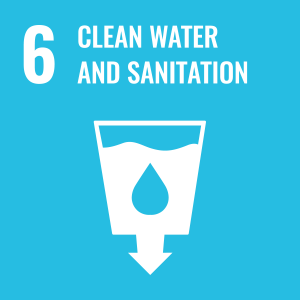 Clean Water and Sanitation: We enable cheap, portable desalination and bacteria-removing technology that doesn’t rely on electricity. Other innovative approaches to water security are being sought such as nanostructures that can capture water from the air. Polymer sponges made from waste can remove oils, inorganic mercury and other toxic contaminants from water. ‘Green Chemistry’ is being used to make new industrial materials that require only non-toxic materials and use less energy. This in turn reduces water contamination from industrial activity.
Clean Water and Sanitation: We enable cheap, portable desalination and bacteria-removing technology that doesn’t rely on electricity. Other innovative approaches to water security are being sought such as nanostructures that can capture water from the air. Polymer sponges made from waste can remove oils, inorganic mercury and other toxic contaminants from water. ‘Green Chemistry’ is being used to make new industrial materials that require only non-toxic materials and use less energy. This in turn reduces water contamination from industrial activity.
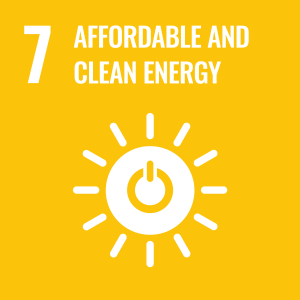 Affordable and Clean Energy: Clean energy is a focus of much supported research – efficient batteries and new solar-energy-capturing materials such as quantum dots and kesterite, are being made more affordably and more sustainably from less toxic materials. Emerging battery materials will allow batteries to be more widely used to provide reliable power, including to remote communities. New alloys will enable hydrogen transport and storage and green ammonia production will dramatically reduce energy consumption.
Affordable and Clean Energy: Clean energy is a focus of much supported research – efficient batteries and new solar-energy-capturing materials such as quantum dots and kesterite, are being made more affordably and more sustainably from less toxic materials. Emerging battery materials will allow batteries to be more widely used to provide reliable power, including to remote communities. New alloys will enable hydrogen transport and storage and green ammonia production will dramatically reduce energy consumption.
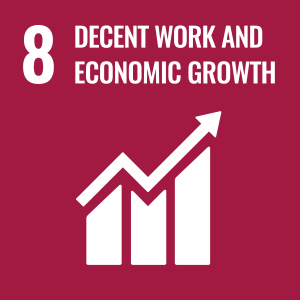 Decent Work and Economic Growth: We support a large amount of research into more efficient exploration and extraction of natural resources. Technology that facilitates a circular economy at a local level work will improve jobs in waste handling to produce value added products for economic growth, while minimising impacts on the environment. More efficient use of global resources is enhanced by the development of lighter, stronger materials such as alloys and composites, for transport, construction and consumer products.
Decent Work and Economic Growth: We support a large amount of research into more efficient exploration and extraction of natural resources. Technology that facilitates a circular economy at a local level work will improve jobs in waste handling to produce value added products for economic growth, while minimising impacts on the environment. More efficient use of global resources is enhanced by the development of lighter, stronger materials such as alloys and composites, for transport, construction and consumer products.
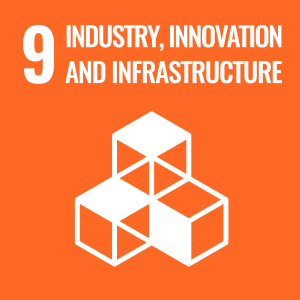 Industry, Innovation and Infrastructure: a wide range of research feeds in to advanced manufacturing to provide innovative new methods and materials for the products and infrastructure of the future. Using traditional waste as a feedstock is one key to creating value-laden products while minimising environmental damage. Also, the design and use of lighter, stronger, more durable materials mean less of the material is actually needed. Whole realms of research use microscopy as they develop these new alloys, ceramics, graphene and nanocellulose fibres.
Industry, Innovation and Infrastructure: a wide range of research feeds in to advanced manufacturing to provide innovative new methods and materials for the products and infrastructure of the future. Using traditional waste as a feedstock is one key to creating value-laden products while minimising environmental damage. Also, the design and use of lighter, stronger, more durable materials mean less of the material is actually needed. Whole realms of research use microscopy as they develop these new alloys, ceramics, graphene and nanocellulose fibres.
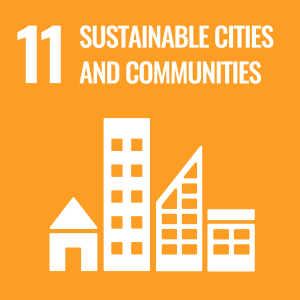 Sustainable Cities and Communities: a huge range of research that aids in reducing the impacts of disasters can also be applied to contributing to sustainable communities. Disasters tend to knock out power, water and sanitation. Cheap, portable water filtration that doesn’t need electricity could provide safe drinking water in these situations. Portable, scalable batteries, along with solar films can produce and provide energy in emergencies. The circular economy can also help to generate more sustainable cities as will greener, more fuel-efficient transport systems.
Sustainable Cities and Communities: a huge range of research that aids in reducing the impacts of disasters can also be applied to contributing to sustainable communities. Disasters tend to knock out power, water and sanitation. Cheap, portable water filtration that doesn’t need electricity could provide safe drinking water in these situations. Portable, scalable batteries, along with solar films can produce and provide energy in emergencies. The circular economy can also help to generate more sustainable cities as will greener, more fuel-efficient transport systems.
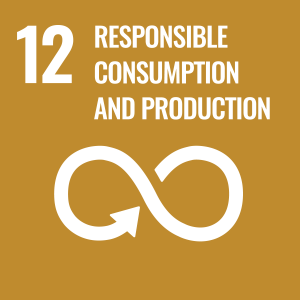 Responsible Consumption and Production: We support development of technologies that: underpin the circular economy; enable more efficient exploration, mining and mineral processing; waste such as mine tailings, automotive, cooking oil and industrial waste is being used to create new, valuable products; allow for more efficient use of existing resources by making lighter, stronger materials. Many new technological developments are increasingly sustainable by using chemical components that are more common and easy to work with.
Responsible Consumption and Production: We support development of technologies that: underpin the circular economy; enable more efficient exploration, mining and mineral processing; waste such as mine tailings, automotive, cooking oil and industrial waste is being used to create new, valuable products; allow for more efficient use of existing resources by making lighter, stronger materials. Many new technological developments are increasingly sustainable by using chemical components that are more common and easy to work with.
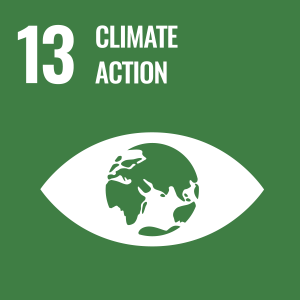 Climate Action: our microscopy is essential for researchers finding solutions to deal with climate extremes and its consequences, including green energy and its storage, drought- and salt-resistant crops, impacts of climate change on ecosystems, creating more resilient crops, creating solutions for emergency situations – medical products such as wound glue and portable X-ray units, movement-powered communications and water purification systems.
Climate Action: our microscopy is essential for researchers finding solutions to deal with climate extremes and its consequences, including green energy and its storage, drought- and salt-resistant crops, impacts of climate change on ecosystems, creating more resilient crops, creating solutions for emergency situations – medical products such as wound glue and portable X-ray units, movement-powered communications and water purification systems.
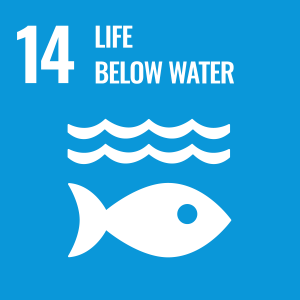 Life Below Water: Our microscopy enables research into coral bleaching, reef health, seagrass meadows and fish growth, the impacts of ocean acidification and microplastics on marine life, development of technologies to re-absorb spilled oil, which prevents damage to water-based ecosystems.
Life Below Water: Our microscopy enables research into coral bleaching, reef health, seagrass meadows and fish growth, the impacts of ocean acidification and microplastics on marine life, development of technologies to re-absorb spilled oil, which prevents damage to water-based ecosystems.
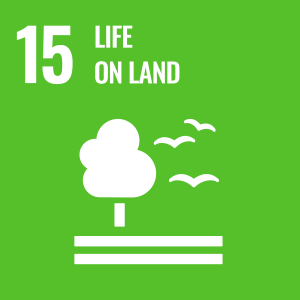 Life on Land: We support research into understanding degraded and low nutrient soils and ecosystems, and how to restore them through use of biochar, plant probiotics and removal of contamination. Also, understanding how Australian native plants flourish in low nutrient ecosystems. We also enable research into marsupial and reptile reproduction and on the importance of biodiversity in maintaining ecosystems and as a resource for new beneficial molecules.
Life on Land: We support research into understanding degraded and low nutrient soils and ecosystems, and how to restore them through use of biochar, plant probiotics and removal of contamination. Also, understanding how Australian native plants flourish in low nutrient ecosystems. We also enable research into marsupial and reptile reproduction and on the importance of biodiversity in maintaining ecosystems and as a resource for new beneficial molecules.
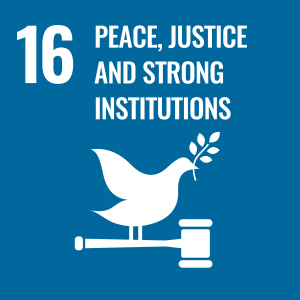 Peace and Justice Strong Institutions: Our UWA facility is the first university in the world to join the United Nations’ international nuclear verification program, to help monitor global nuclear safeguards through accreditation to the Agency’s Network of Analytical Laboratories.
Peace and Justice Strong Institutions: Our UWA facility is the first university in the world to join the United Nations’ international nuclear verification program, to help monitor global nuclear safeguards through accreditation to the Agency’s Network of Analytical Laboratories.
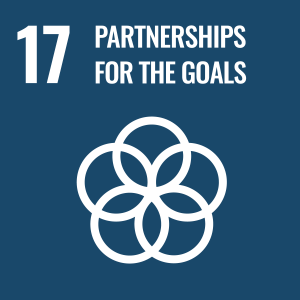 Partnerships to achieve the Goal: enabling of quality, impactful research feeds into a virtuous circle of increased effective international research and infrastructure collaborations and partnerships that foster greater innovation.
Partnerships to achieve the Goal: enabling of quality, impactful research feeds into a virtuous circle of increased effective international research and infrastructure collaborations and partnerships that foster greater innovation.
Array
May 12, 2021